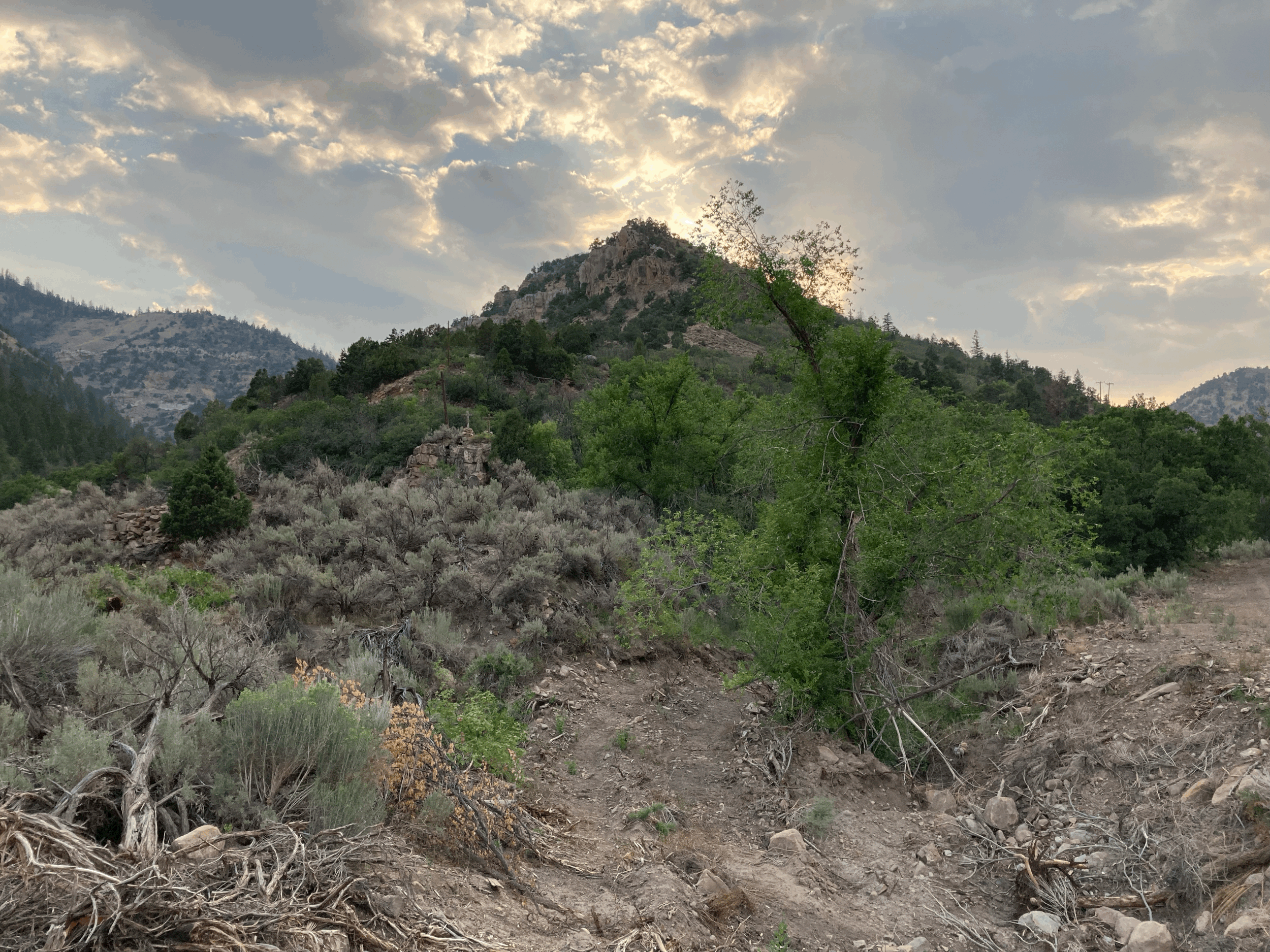What constitutes a community? What do they form around? What’s the seed? What makes them persist over time?
Helper, Utah was founded as a “helper engine” town in 1881. Here trains would pick up an extra engine to help them up the steep, relentless grade of Price Canyon and over Soldier Summit. At the beginning of the 20th century, Helper was a booming railroading and coal mining community. It was also the most diverse place in Utah, with 27 different languages spoken. Coal later diminished in value, eventually ran out, and the community has been forced to find a new way. From flower-planting to the inception of an annual arts festival to the revitalization of Main Street’s historic buildings, Helper is finding ways to hold onto its story while simultaneously moving forward with an entirely new economy, one based on the arts and tourism.
To understand how Helper found itself in this moment—where an economic shift is necessary—and to find out if locals are on board with this shift, we interview three Helper residents. In this episode, we speak with Jean Boyack, sometimes referred to as the “Mother of Helper”. We also talk to Richard Colombo, long-time owner of the R&A Market in Helper. He also served with the Helper Fire Department for 41 years, recently retiring from his position as Chief. And we speak with Mike O’Shea, who was born and raised in Helper and was the principal at a local elementary school. Each of these residents came from coal mining or railroading families and has observed Helper through boom times, decline, and revitalization.
Listen to find out what is contributing to the apparent ease and speed with which Helper's economic shift is taking place. Is it Helper's history of diversity? Its union history? Could the name Helper play some role here? Does economic revitalization just take a few individuals who care? Are new residents and old-timers alike on board with change? Is it the creation of opportunity, gentrification, or both? What does the future hold for Helper, Utah?
A few but not all of these questions we hope to answer in part one of this series on Helper, Utah.
listen now on all other platforms
Helper engines preparing to help a train over Soldier Summit.
Typical Helper houses with the cliffs of the Tavaputs plateau behind them.
The Price River and the River Walk beside it.
The Western Mining and Railroad Museum
The Museum is in the building that was once the Helper Hotel.
A caboose beside the museum.
Old mining equipment behind the Western Mining and Railroad Museum in Helper.
The La Salle Hotel
Emil’s Tavern, the bar that Jean Boyack’s grandfather ran.
A revitalized gas station on the corner of Main Street and Locust Street.
R & A Market, the store that Richard Colombo ran from 1970 to 2009.
North side of R & A Market.
More evidence of Helper’s “wild and wooly” past.
Matt Warner.
The New House Hotel undergoing renovation.
The Avalon House.
The Lincoln Hotel is now an incredible motorcycle museum.
Back side of the Lincoln Hotel.
Ruins in Spring Canyon, just a few miles outside of Helper to the west.
Spring Canyon Ruins slowly dissolving into the land.
Remnants of stone walls in Spring Canyon.
Two crosses on a rock wall and a smoky sky in Spring Canyon.
The ruins in Spring Canyon are on private property, still owned by the Blackhawk Mine.
A collapsed trestle with bits of coal strewn about it.
Stock image of the Carbon Power Plant before it was torn down. It closed in 2015 due to new emissions requirements.
Carbon Power Plant site after reclamation, July 2021.
A monument to the Carbon Power Plant.
Five monuments to Carbon County’s history stand on the edge of a pullout along Highway 6 just north of Helper.
Coal seams visible in the roadcut of Highway 6 near Castle Gate.
A monument to Carbon County’s outlaw history.
A monument to the Castle Gate Mine Disaster of 1924 when 171 miners were killed in a series of explosions.
A monument to the Willow Creek Mine Explosion of 2000, which killed two, prompting the closure of the mine.

































